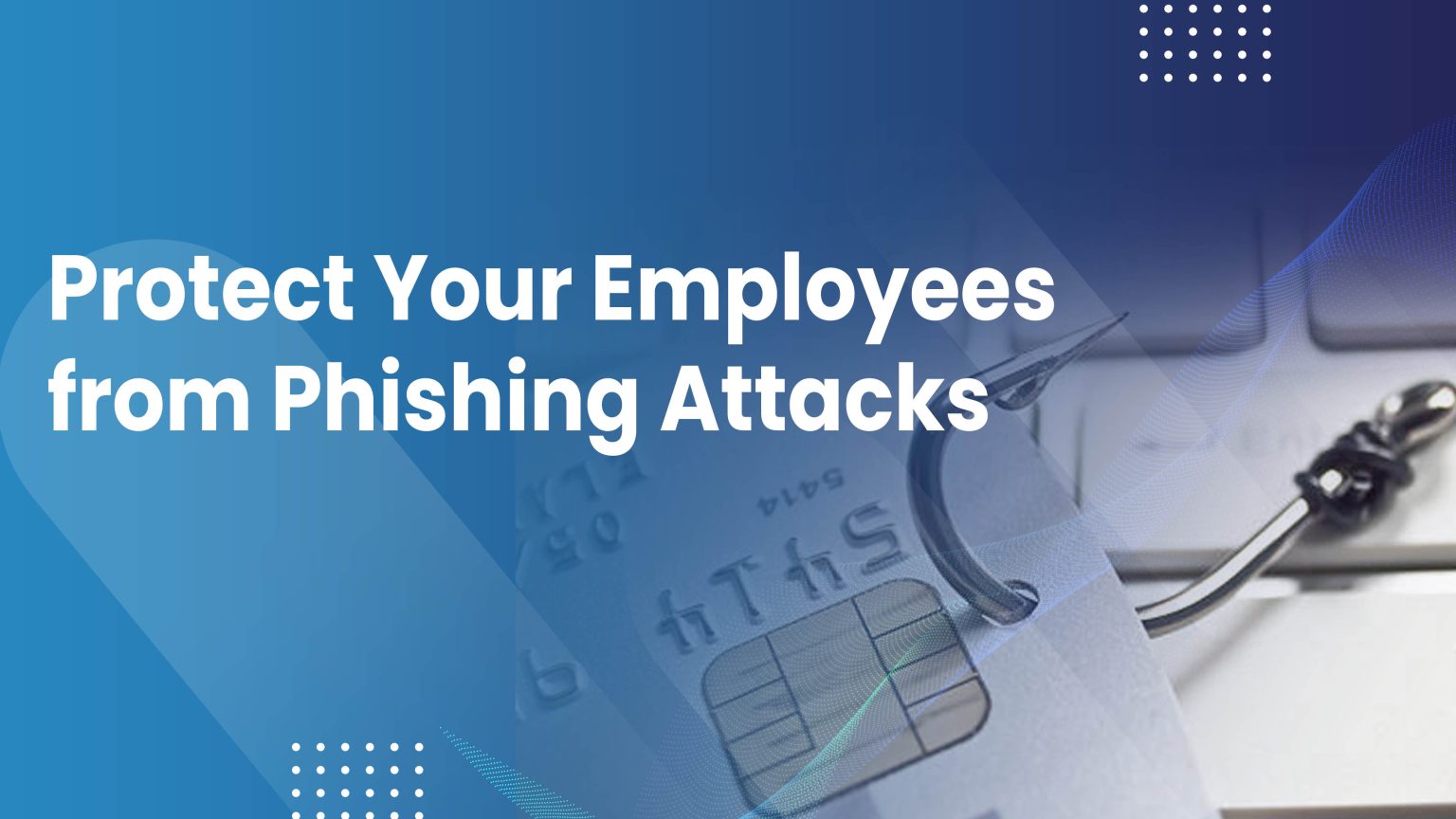Estimated Reading Time: 6 minutes
Phishing is a common tactic used by hackers and cybercriminals to steal users’ personal information, such as usernames, passwords, credit card details, and more. For business operations this is especially concerning as it can open up high-value and sensitive data to abuse.
According to CISCO’s 2021 Cybersecurity threat trends report, 90% online attacks are carried out by phishing. Phishing is carried out through email, websites, and text messages. Hackers can gain access to information by creating a fake login page that looks exactly like the site a user is trying to log in to.
The user enters their username and password, which the attacker can use for their own purposes.
90% of security breaches in businesses are a result of phishing attacks.
In 2022, phishing became even more sophisticated, using advanced AI and machine learning algorithms to mimic real users and trick people into selecting malicious links or providing sensitive information.
The phishing attacks come in various forms and there are always new ones popping up but here are some of the more common examples:
- Pretending to be tech support
- Posing as a bank representative or other financial institution (accounting/bookkeeping)
- Posing as a telemarketer
- Creating fake vaccine sign-up websites
Some experts even predict that phishing could eventually lead to identity theft and financial fraud on a massive scale.
With so many cyber attacks carried out through phishing, it’s important to be vigilant and protect yourself from these scams.
Different Types of Phishing Attacks
There are many different types, but some of the most common are phishing, vishing, and smishing. Let’s take a look at these in more detail.
Phishing is an attack where the hacker uses a fake website or message to try and trick users into entering their personal information.
This can be done through websites, email and text messages and even VOIP texting. These attacks are often very convincing, as they may use sensitive information that only the targeted user would know in order to convince them that the site or message is legitimate.
Vishing attempts to achieve a similar attack but through voice communication. The attacks come via phone calls, robocall, voicemail and VoIP.
On the other hand, smishing is a phishing attack that uses SMS text messages in order to trick users into providing their personal information.
Smishing attacks may also attempt to get users to download malicious software on their devices by disguising it as something else. For example, a smishing attack might ask users to click on a link in order to view an “important” document, but this link would actually install malware on their devices.
Due to the prevalence and sophistication of phishing attacks today, it is important for employees to be aware of the various tactics that hackers use, as well as to take steps to protect themselves and the organization from these attacks.
Cost to the Company
Phishing attacks can have a significant impact on business expenses, as they can result in loss of data, financial fraud, and damage to the company’s reputation.
For example, one study found that phishing attacks cost organizations an average of $1.6 million per year. This is due to direct costs, such as legal fees and loss of productivity, as well as indirect costs, such as customer loss and damage to the organization’s brand image.
The following are some popular examples of phishing attacks on companies:
- Google Phishing Attack: In 2017, Google was targeted by a major phishing attack in which hackers sent out malicious emails to millions of Gmail users. The emails appeared to be from legitimate sources and included attachments containing malware that could potentially steal users’ personal information. As a result of this attack, Google took steps to strengthen its security measures and educate users about phishing threats.
- Equifax Phishing Attack: In 2017, Equifax, one of the largest credit reporting agencies in the US, was targeted by a major phishing attack that resulted in the exposure of sensitive data belonging to over 143 million people. The hackers used sophisticated phishing techniques, including forged emails and misleading websites that resembled legitimate Equifax properties, in order to trick employees into providing their login credentials.
- Tencent Phishing Attack: In 2018, Chinese internet giant Tencent was targeted by a massive phishing scam in which hackers used fake job postings to lure over 1 million users into providing their personal information. The hackers then used this data to steal millions of dollars from victims’ bank accounts. Following the attack, Tencent took steps to strengthen its security measures and educate users about phishing scams.
As phishing attacks continue to become more sophisticated over time, it is important for companies to invest in robust cybersecurity measures in order to protect themselves from these threats.
Some possible strategies include:
- implementing two-factor authentication
- investing in anti-phishing enterprise software
- educating employees about common phishing tactics and how to avoid them
- disable email addresses that are no longer in use
- change passwords regularly
10 Basic Things To Watch Out For To Prevent a Phishing Attack
IT admins work diligently to prevent phishing attacks from happening on their watch but as these are social engineering tactics the end-users must stay well-informed too. One of the best ways to prevent a phishing attack is to be aware of some common signs, which are:
- Emails that have unusual or suspicious attachments, links, or file formats.
- Emails with misspellings or grammatical errors.
- Emails from unknown senders who request sensitive information such as usernames, passwords, credit card numbers, etc.
- Suspicious-looking emails that alert users about account changes or other urgent matters (e.g., password resets).
- Unusual email activity on accounts (e.g., large amounts of spam getting sent in a short period of time).
- Strange pop-ups on websites require users to enter personal information such as usernames and passwords before proceeding further on the website.
- Suspicious activity on a company’s network, such as the installation of unauthorized applications or software.
- Suspicious requests to perform actions in the system (e.g., server maintenance requests).
- The appearance of phishing emails and links within web-based email clients (e.g., Gmail, Outlook, etc.).
- Unusual computer behavior that results from registry changes or router modifications.
By looking out for these signs, following instructions from trusted IT support and taking steps to prevent phishing attacks, businesses can keep their data and customers safe from harm.
What to do after recognizing a phishing attack?
Once you have recognized a phishing attack, there are several steps that you can take to minimize the damage and prevent it from happening again. These may include:
- Disconnect the device from the network immediately in order to limit the spread of any malicious software or other sensitive data that may have been compromised.
- Report the incident to the IT administrator or security team so that they can investigate and take appropriate action.
- Update relevant passwords and usernames as soon as possible in order to ensure that any stolen credentials cannot be used for further attacks.
- Update relevant staff members on the status of the attack and resolution.
- Review the company’s cybersecurity policies and procedures to identify any areas where improvements can be made.
- Work with other organizations, such as local law enforcement or government agencies, to share information about the attack and help prevent future incidents.
- Seek professional advice and assistance, if needed, in order to ensure that your data and systems are properly protected moving forward.
Phishing Protection for Email Inboxes
There are several ways that companies can protect their users from phishing attacks inside their email inboxes. One of the most effective is to use email filters and anti-spam software, which can help detect and block phishing emails before they reach a user’s inbox.
Another important strategy is to educate employees about common signs of phishing messages, such as suspicious attachments or links, grammatical errors or spelling mistakes, and requests for sensitive information like usernames and passwords. This can help prevent employees from falling victim to these attacks by making them more aware of potentially malicious content in emails.
Overall, by staying vigilant in the fight against phishing and taking proactive measures to protect users from these attacks, companies can help keep their data and customers safe from harm.
Website Filtering, Web and Email Isolation
Web filtering is an indispensable method for halting users from going to phishing websites. You can use a web proxy or DNS to filter and make sure your organization remains secure. This practice is absolutely essential in keeping malicious attempts at bay and should be taken seriously by all organizations that value the protection of their data.
Without getting into too many details, these filters categorize web pages and use virus-scanning systems to detect potential threats.
Advanced web filtering solutions use state-of-the-art machine learning algorithms to detect and eliminate phishing websites, even when they lack any obvious malicious content.
The isolation approach provides complete protection from malicious threats by separating online content away from user desktops and into secure containers with minimal disruption to the user experience.
Conclusion
As a business owner, it is important to be vigilant and proactive in the fight against phishing attacks. By staying up-to-date on the latest phishing tactics and taking appropriate steps to safeguard all systems and data, owners can help ensure that the company remains safe from harm.





